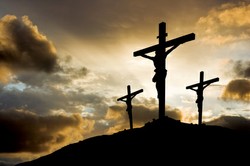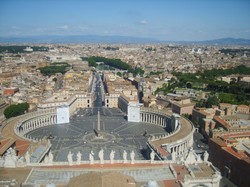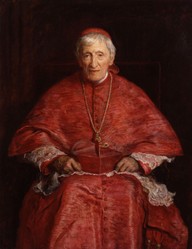Today is St. Patrick's Day. People keep telling me about drinking green beer and being pinched for not wearing green. This seems like a silly, even if fun, way to celebrate the feast day of the man who brought Christianity to Ireland. No, St. Patrick was not the first missionary to try to convert the Irish. He wasn't even Irish by birth.
He was born a Roman citizen in Britain, son of Calpornius, who was a deacon, and grandson of Potitus, who was a presbyter, or priest. His date of birth is uncertain -- somewhere between 385 and 415 AD. His mission in Ireland lasted about thirty years after which he died. The exact dates and details are uncertain, as are many of the legendary claims about his life. For example, though St. Patrick has long been credited with freeing Ireland from snakes, it is unlikely there ever were any snakes in Ireland. However, those who created such stories could have been speaking in metaphorical language. What does exist are at least two texts that scholars affirm are really written by St. Patrick's hand. These texts are his Confessions and a Letter to the Soldiers of Coroticus, who had slaughtered some of Patrick's newly baptized followers. Both of these texts were written in Latin but have been translated into English.
According to Patrick's own account, when he was not yet sixteen, he was captured as a slave along with thousands of others. Despite the religious background he had come from, Patrick wrote that he "was ignorant of the true God," and felt that he deserved his fate because he had cut himself off from God and was a bit of a rebel. Yet somehow in his captivity, Patrick opened his eyes to himself and to his relationship with God. He turned to God and felt that throughout all of his experiences as a slave, alone and lonely amidst strangers, he was watched over and protected and that God comforted and strengthened him "as a father consoles a son."
It was through Patrick's experience of his own weakness and his humility of being able to really look at himself that made him more attuned and sensitive to God's presence all around him, in nature and in other people. This is what gives the prayer attributed to him, called "St. Patrick's Breastplate," such power and such beauty.









 Children Learn Through Playon 09/17/2015
Children Learn Through Playon 09/17/2015
 Boston Public Gardenon 06/19/2015
Boston Public Gardenon 06/19/2015
 Remembering the Supremeson 01/20/2014
Remembering the Supremeson 01/20/2014
 How to Help Your Baby Sleepon 09/14/2013
How to Help Your Baby Sleepon 09/14/2013




I'd Love to Hear Your Comments